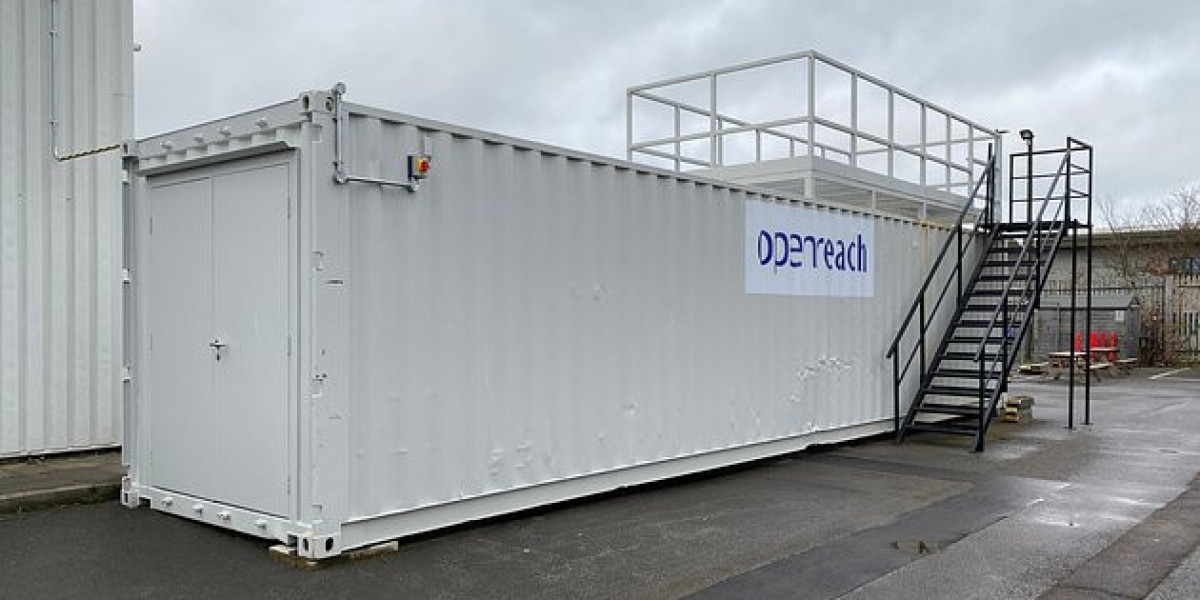 Modular Buildings Containers
Modular Buildings ContainersModular building containers are designed for every project to meet its unique requirements. They can be constructed in a factory, and then delivered to the location to be installed. This reduces the amount of time required to complete the building and reduces waste.
 They can be used to build various other structures, including offices and hospital. They have been used successfully to address a range of issues, including housing shortages during the pandemic.
They can be used to build various other structures, including offices and hospital. They have been used successfully to address a range of issues, including housing shortages during the pandemic.Cost-Effectiveness
Modular buildings are a cost-effective solution for a variety of business needs. They are fabricated off-site and assembled on the construction site which helps save the cost of labour. The modular construction process helps companies reduce costs by minimizing waste. It also reduces construction workers required on a construction site and allows a quicker completion of the project.
The modular construction process is faster and safer than traditional methods. It also eliminates delays due to weather and other factors. It also reduces the risk for mechanic's liens that can occur when contractors are not paid for their work. It is easier for companies to secure financing and are able to meet their deadlines more efficiently.
Shipping containers are the most popular building blocks for modular structures. They come in a range of sizes and can be adapted to the needs of any project. They can be outfitted with windows, HVAC units, and insulation which makes them suitable for homes and offices. They are also highly transportable, making them an excellent option for projects that require frequent transportation.
Modular containers for building can be used in all climates. The manufacturing process ensures that the structure is insulated and has additional strength for tough conditions. This means that the building will be more resistant to extreme heat and cold and also have better fire resistance.
Modifying shipping containers is also an eco-friendly option than traditional construction. The materials used in the modification process are re-used and reused thus reducing the need for new resources. This reduces waste and is in accordance with corporate social responsibility (CSR) and sustainability goals.
Lack of consistency among manufacturers is a challenge when building modular structures. The structures are custom-designed, so it is important that buyers conduct thorough research before choosing a vendor. This will help buyers avoid issues such as poor workmanship and defective design. In addition, it is essential to keep in touch with the manufacturer throughout the process. This will ensure that all parties are aware of the process and can alter the schedule as necessary.
Flexibility
Modular construction has become an alternative to traditional building techniques and is becoming a popular option for many companies. It can reduce construction time and save money as well as offer an earlier turnaround than traditional methods. It is also environmentally green, by using recycled materials and avoiding the production of waste. This approach is especially useful for relocating equipment or workers to different areas of a site and is able to be used for a variety purposes.
Containerized modular buildings are built from standard shipping containers that are joined together horizontally or vertically. They can be used as office space, clinics, dormitories and many more. Containers can be customized to suit your requirements and delivered to the construction site. These structures are simple to construct and designed to withstand the harshest conditions. They can be easily relocated and reused, thus reducing the need to build new structures on site.
Modular construction of shipping containers is a rising trend in the construction industry, bringing the benefits of sustainability, cost-effectiveness and flexibility. Numerous companies are employing this method to construct everything from food trucks to office buildings. This method is fairly new and requires careful planning. The main challenge is to ensure that the design meets all requirements and is structurally sound.
The modular construction method allows for faster turnaround times and is less disruptive than traditional construction methods. The modules are shipped flatpack or as profiles from the factory to construction sites and constructed on site by skilled technicians. This method can also reduce the necessity for excavation and foundation work, allowing constructions to be completed faster.
By adding insulation, HVAC units and windows to the shipping container It can be turned into a modular workplace. The result is a comfortable and functional work space, with plenty of airflow and light. The container can also be powder-coated with corporate colors to create an attractive and striking exterior. This will help brand the building and draw customers. Shipping containers are versatile and can be used to create display booths, retail pop-up stores, or offices.
Durability
The strength of modular building containers makes them an ideal choice for housing and offices. They are built to stand up to multiple assembly and relocations, and can be used in harsh environments with seismic activity or high winds. They are also resistant to flooding and can be raised on concrete foundations or stilts to prevent damage from water. They are also highly customizable, with a wide range of doors, windows, and insulation options.
Additionally, these buildings are easy to clean and require minimal maintenance. Modular construction provides a quicker build time than traditional methods, and the prefabrication process is carried out in a controlled space. Since they do not have roof shingles, there is no concern about termite infestations or other insects. They are also much more durable than conventional structures because they are made from steel.
Modular shipping containers are now an increasingly popular option for construction due to their affordability and long-lasting. They can be used to build office spaces, living spaces, and even mobile schools. They can be put together to form large buildings or used as standalone units. Modular buildings are customizable because they are constructed from prefabricated elements.
Modular building has numerous advantages in terms of cost and schedule savings. It also improves the safety of workers and improves working conditions. They are also ideal for remote areas where it is difficult to find traditional builders and materials. However, there are a few drawbacks to using modular construction for construction projects. For instance, it may not be suitable for certain projects, such as commercial and residential building.
Some firms that offer modular construction services offer modules that are of poor quality, and they degrade rapidly. It is crucial to select a business that makes use of high-quality materials and has years of experience in the field. This will ensure that your modular building is of top quality and will last for a long time.
Shipping container modular construction is a novel approach to building. By converting old shipping containers into offices businesses can cut costs and gain an advantage in the marketplace. Despite these issues, modular construction has gained significant support from architects and engineers.
Sustainability
Modular buildings are eco-friendly and demonstrate how smart design can help in global efforts for environmental protection. They are constructed using prefabricated parts and are constructed in factories, which reduce waste and save energy. The sustainable modular building approach also permits a flexible and affordable structure that is suitable for various uses.
Modular construction is the assembly of shipping containers that are standard for the purpose of creating offices, kindergartens, schools and other facilities. The design of the building is based on the needs of the customer's requirements and incorporates partition walls and windows, as well as plumbing and electrical components. The modules are transported to the construction site in flatpack form or as profiles and assembled by qualified technicians. The modules are then joined to each other on the spot and then completed with walls, ceilings and flooring.
The modular construction system has the advantage that the majority of the work can be done in the factory. This means that there is no need for costly construction workers or huge machinery. This means that construction is done in a controlled environment, with minimal disturbance to the surrounding landscape.
Another way that modular structures are eco-friendly is through the recycling of materials, like steel and wood, and recycled shipping containers. These containers could be abandoned at ports, but when transformed into modular structures, they can benefit the environment.
One of the most crucial aspects of sustainability is the reduction of carbon emissions. Traditional construction processes employ large machines and produces many waste products, which contributes towards the global carbon footprint. Modular buildings, on the other hand, are often constructed in factories, and the entire manufacturing process produces considerably less carbon dioxide than traditional construction methods.
Modular construction is an ideal option for businesses who need to expand their offices or relocate their offices. Modular construction is extremely flexible and can be altered or reconfigured easily. It is also possible to move structures without requiring the demolition of them, which greatly reduces the demand for raw materials. It is also easy to modify the functions of a modular building by simply adding or removing standard components. This helps businesses reduce their energy consumption and can qualify them for LEED certification.








